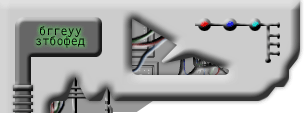|
One of the first popular Filipino rock stars was Bobby Gonzales, whose major hit was "Hahabul-Habol." Eddie Mesa, another teen idol from the period, became known as the "Elvis Presley of the Philippines." Back then, many Filipinos referred to Rock bands
as "combos," many of which used nontraditional instruments like floor-bass bongos, maracas, and gas tanks.
1960s
In the early 1960s, as electric instruments and new technology became available, instrumental American and British bands
like The Shadows and The Ventures flourished. Filipino instrumental bands arose as well in this period; bands like The Deltas, The Celtics, RJ & the Riots, The Technicolors, The Downbeats, The Hi-Jacks, and The Electromaniacs. These bands spawned the first Filipino singer-songwriters.
In 1963, the so-called British Invasion brought bands like The Beatles to mainstream audiences worldwide. Their widespread popularity and their embrace of the counterculture injected the possibility
of socio-political lyrics with mature comments on real life into popular music. Immensely influenced by this new breed of
British artists, many Filipino bands began adopting similar musical styles; and this produced acts like Downbeats, Tilt Down Men, The Moonstrucks, The Dynasouls, and Bits & Pieces. Some groups enhanced their style by adding unconventional instruments like a horn-and-brass section, trumpet, flute, and saxophone. Examples of such bands included Drop Outs, The Howlers, The Originals, The Houserockers, Clubmen, and The Imperials.
In the late 1960s, the onset of the Woodstock generation brought about bands like Crosby Stills Nash & Young, Jimi Hendrix Experience, Chick Corea Return to Forever, Mahavishnu Orchestra, The Who, and others in this frontier such as Ten Years After, Iron Butterfly, Led Zeppelin, Joe Cocker and The Mad Dogs & Englishmen, to audiences worldwide. This brought about the rock culture that still heavily influences
Pinoy Rock today. This era produced acts like Circus Band, Maria Cafra, Anakbayan, Isang Kilo Band with members Boy Katindig, Pabs Dadivas, Walter Calinawan, Wally Ang, Bambi Borromeo, and Boy Fragante, Psyclones, Makati Avenue Blues Band, John Of The Cross and the Juan Dela Cruz Band to name a few.
|
|
1970s
Into the early 1970s, Filipino music was growing more nationalistic and socio-political in nature, as well as using Tagalog more often. Popular or Pop music still dominates the airwaves with artists such as the Apo Hiking Society and Hotdog. The songs like "Ang Miss Universe ng Buhay Ko" (The Miss Universe of My Life) of Hotdog combined Filipino and English words within the same song. This helped innovate the so-called "Manila Sound". OPM (Original Pilipino music) also became popular.
However, emerging social and political consciousness somehow creeped in to the industry with the traditional allied genres
that are folk and rock music. Folk musicians included Freddie Aguilar, Asin, Florante. (In 1978, Freddie Aguilar's debut single, "Anak", became the most commercially successful Filipino recording in history.
The song became known also in other Asian countries and in Europe). Perhaps Asin, a folk ethnic band, was the first commercial band to successfully brought a pro-environment song to the airwaves with "Masdan
Mo Ang Kapaligiran". Also famous for providing subtle rebellious (anti-Marcos dictatorship sentiment was growing at that
time) and peace messages behind its skillful vocal harmonizing, Asin gave the masses hits such as "Bayan Kong Sinilangan
(Cotabato)", "Balita", and "Pagbabalik".
yourock.com
|

